The Stranger Beside Me Read online
After working alone with him on the late-night shift at a suicide hotline, she became close friends with Ted Bundy, a handsome, whip-smart psychology major about to attend law school. Soon the world would know him as one of the most savage serial killers of our time. …
THE STRANGER BESIDE ME
The true-crime classic from #1 NEW YORK TIMES BESTSELLING AUTHOR ANN RULE
“A shattering story … carefully investigated, written with compassion but also with professional objectivity.”
—Seattle Times
“Overwhelming!”
—Houston Post
“Ann Rule has an extraordinary angle … [on] the most fascinating killer in modern American history.”
—The New York Times
MORE ACCLAIM FOR ANN RULE’S BESTSELLERS—SHATTERING TRUE ACCOUNTS TORN FROM TODAY’S HEADLINES
TOO LATE TO SAY GOODBYE
“The quintessential true-crime story. … [A] mesmerizing tale. … Prepare yourself for a few late nights of reading.”
—Bookreporter.com
GREEN RIVER, RUNNING RED
“[Rule] conveys the emotional truth of the Green River case.”
—Los Angeles Times
“Rule infuses her case study with a personally felt sense of urgency.”
—People
HEART FULL OF LIES
“A convincing portrait of a meticulous criminal mind.”
—The Washington Post
“Fascinating. … The sheer weight of [Rule’s] investigative technique places her at the forefront of true-crime writers.”
—Booklist
EVERY BREATH YOU TAKE
“Affecting, tense, and smart true crime.”
—The Washington Post Book World
“Absolutely riveting … psychologically perceptive.”
—Booklist
… AND NEVER LET HER GO
“Even crime buffs who followed the case closely [will] gain new insights.”
—The Orlando Sentinel (FL)
BITTER HARVEST
“Impossible to put down. … A tour de force.”
—Kirkus Reviews
PRAISE FOR THE #1 NEW YORK TIMES BESTSELLING SERIES
Ann Rule’s Crime Files
Thirteen riveting volumes of true-crime stories drawn from her personal collection.
“Chilling cases. … A frightening, fascinating rogue’s gallery of mercenary murderers.”
—Mystery Guild
“Prolific and talented Rule proves her warranted reputation as one of true crime’s leading lights. … With a novelist’s skill, Rule brings to life a rich case.”
—Publishers Weekly (starred review)
“Spine-tingling … could win a place in any insomniac’s heart.”
—Barnesandnoble.com
“Fascinating, unsettling tales. … Among the very small group of top-notch true-crime writers, Rule just may be the best of the bunch.”
—Booklist
“Rule’s ability to depict both criminals and victims as believable human beings is perfectly embodied in this sad, fascinating account.”
—Library Journal
“Gripping tales. … Fans of true crime know they can rely on Ann Rule to deliver the dead-level best.”
—The Hartford Courant (CT)
THE STRANGER
BESIDE ME
by
Ann Rule
Planet Ann Rule
Copyright © 2012 by Ann Rule
ACKNOWLEDGMENTS
I have been fortunate indeed to have had the support of many individuals and organizations in writing this book. Without their help and emotional backing, it would have been impossible, and I would like to thank them: The Committee of Friends and Families of Victims of Violent Crimes and Missing Persons; The Seattle Police Department Crimes Against Persons Unit. The King County Police Department Major Crimes Unit; former Sheriff Don Redmond of Thurston County. Lieutenant James Stovall of the Salem, Oregon, Police Department. Gene Miller of the Miami Herald. George Thurston of the Washington Post, Tony Polk of the Rocky Mountain News. Rick Barry of the Tampa Tribune. Albert Govoni, editor of True Detective. Jack Olsen. Yvonne E. W. Smith. Amelia Mills. Maureen and Bill Woodcock. Dr. Peter J. Modde. And my children, Laura, Leslie, Andy, and Mike, who gave up months of their mother’s companionship so that I might write.
And tortures him now more, the more he sees
Of pleasure not for him ordained: then soon
Fierce hate he recollects, and all his thoughts
Of mischief, gratulating, thus excites:
“Thoughts, whither have ye led me? with what sweet
Compulsion thus transported to forget
What hither brought us? hate, not love, nor hope
Of Paradise for Hell, hope here to taste
Of pleasure, but all pleasure to destroy,
Save what is in destroying. other joy
To me is lost. …”
Paradise Lost: Book IX
(Lines 469-79)
Table of Contents
The Final Chapter
Part 1
Part 2
Part 3
Preface
Chapter 1
Chapter 2
Chapter 3
Chapter 4
Chapter 5
Chapter 6
Chapter 7
Chapter 8
Chapter 9
Chapter 10
Chapter 11
Chapter 12
Chapter 13
Chapter 14
Chapter 15
Chapter 16
Chapter 17
Chapter 18
Chapter 19
Chapter 20
Chapter 21
Chapter 22
Chapter 23
Chapter 24
Chapter 25
Chapter 26
Chapter 27
Chapter 28
Chapter 29
Chapter 30
Chapter 31
Chapter 32
Chapter 33
Chapter 34
Chapter 35
Chapter 36
Chapter 37
Chapter 38
Chapter 39
Chapter 40
Chapter 41
Chapter 42
Chapter 43
Chapter 44
Chapter 45
Chapter 46
Chapter 47
Chapter 48
Chapter 49
Epilogue
Afterword
1986
1989
2000
Notes
THE FINAL CHAPTER?—
2008
PART ONE
I never expected to be writing about Theodore Robert Bundy once again. The man who was neither famous nor infamous when I first knew him thirty-seven years ago has been dead for twenty years, and yet new generations are intrigued by him. I have written an epilogue, an afterword, “The Last Chapter,” and “Update: Twenty Years Later” for The Stranger Beside Me, my first published book, but Ted’s story never seems to end. I will probably continue to add to this book for years to come.
Some of the information I added to my original book turned out to be untrue—folktales and rumors that most of the Bundy experts believed—and I want to correct those. The single executioner who pulled down the arm that activated the electric chair in Starke, Florida, wore no mask, nor did he have thick, mascaraed eyelashes. That was part of the legend of Ted.
In this brand-new section, I have the words of an eyewitness to Ted Bundy’s death, and he will erase any misconceptions.
New information about Ted keeps surfacing. And his “almost-victims” continue to come forward. Part of me wants to turn away an
d be done with the memories of Ted. I’ll admit I even put off writing this chapter. The reason?
Ted Bundy haunts me still.
If his desperate fight to save his own life after taking so many others had succeeded and Ted was still locked behind prison bars, he would be an old-timer there now—sixty-two-years old. My granddaughter is now the age I was when I first met Ted, and I am a great-grandmother. Ted’s daughter with his then-wife, Carol Ann Boone, is twenty-six. Meg Anders’s child, who viewed Ted as a father figure, is close to forty.
The young women Ted killed would be in their mid-fifties. Those myriad potential victims who barely escaped from him with their lives are between fifty and sixty today. No one will ever know just how many there were.
The world moves on inexorably without Ted Bundy. But he left behind so many scars, nightmares, and memories that cannot be blotted out.
Ted was never as handsome, brilliant, or charismatic as crime folklore has deemed him. But, as I have said before, infamy became him. A virtual nonentity before he was suspected of a series of horrific crimes, he somehow became all of those things as the media embraced him. The passage of decades has raised—or lowered—Ted to the level of Leopold and Loeb, Albert DeSalvo, William Heirens, Charles Manson, and perhaps a dozen other murderers who killed for the sake of killing.
I always believed that time would blur the interest in Bundy, particularly after his execution. Instead, he has become almost mythical.
As a pulp magazine writer yearning to be a book author, I should be grateful that I had a ringside seat to the monstrous scenario Ted Bundy acted out as, according to one periodical, the “glamour boy of homicide.”
But I’m not grateful. I would rather I’d never had a book of my own, much less twenty-nine, and that Ted’s victims had lived. His crimes changed my life, and opened the door to my first book contract, but as a human being, I wish I could go back and erase him and his murderous swath through America. If only I had the power to make none of it real. Sometimes, after so many years, it almost seems that Ted Bundy and his dozens of victims were only a figment of my imagination.
Ironically, the image of Ted that remains in the public eye almost forty years later tends to be that of the handsome and daring criminal. This is especially true with young women who are today the same age as his victims in the 1970s.
I shouldn’t be surprised that I still get letters and e-mails from twenty-year-olds who are fascinated with Ted Bundy. Thirty years ago, I watched the Florida girls who lined up outside the courtroom in Miami, anxious to get a place on the gallery bench behind his defense table.
They gasped and sighed with delight when Ted turned to look at them.
He enjoyed their reaction. He was in control, or believed he was, during that first trial in Miami.
For some reason, and I am at a loss to say why, I get more than an average proportion of mail from Italy, where women “love” Ted and mourn him. I’ve received mail about him from every state in the union, and from France, Sweden, Holland, Germany, and even Zimbabwe and China. He has become the American Jack the Ripper, the real Dracula, a killer whose genius soared over common murderers. And, in so being, he is perversely attractive to lonely women.
Maybe part of it was my fault: Did I describe the “good” side of Ted, the one I saw in the first three years I knew him, too well? He appeared to be kind, considerate, and honest then, and I didn’t recognize the danger—not to me, but to pretty young women who fit his victim profile. I wanted to warn readers that evil sometimes comes in handsome packages. I wanted to save them from the sadistic sociopaths who still roam, looking for victims.
When I look back, I see how naïve I was. I even see how naïve I’ve continued to be in one sense. I still want to save women’s lives, but just one more would be important to me.
In 1980, I didn’t really understand the difference between being psychotic and having a personality disorder. In the first edition of this book, I wrote that Ted had to have been insane when he killed all those young women. I really thought Ted was just plain crazy, and said he should be sent to a mental hospital.
And I was wrong. At least I understood that his personality disorder meant that he should never be released into society. But that’s about all I can take credit for. I’m not embarrassed that I stumbled over my diagnosis. Many psychologists and psychiatrists who interviewed Ted did, too.
He wasn’t insane. He undoubtedly had a number of personality disorders—probably narcissistic, borderline, and sociopathic. One psychologist, who changed her diagnosis of Ted Bundy more than once, started out with bipolar and finally settled on Multiple Personality Disorder. I never agreed that either category was accurate. His characteristics and actions didn’t fit—unless you forced them into the wrong holes.
Ted, I believe, was a sadistic sociopath who took pleasure from another human’s pain and the control he had over his victims, to the point of their death, and even after. He was a child, an adolescent, a young man who never felt much power over his life. He chose a hideous path as he sought power and control.
He was all that mattered to him.
One who suffers from a personality disorder knows the difference between right and wrong—but it doesn’t matter because he is special and he deserves to have and do what he wants. He is the center of the world. We are all paper doll figures who don’t matter. Under the law and medically, someone who is insane doesn’t know the difference and is not responsible for his actions, however shocking.
Early on, I thought that at some point Ted would confess because he surely must have felt guilty. But he never felt guilty. He had no capacity for guilt.
Only for survival.
And there was something about Ted Bundy that so terrified some of the women who got away from him at the last minute. They “smelled” danger early enough to scream, fight, or run. For years, they couldn’t even talk about their encounters with him. They were middle-aged and he had been dead long enough to become less of a threat to them when they finally contacted me.
Most of them were originally afraid to read The Stranger Beside Me because they didn’t want to find out that their belief that he’d approached them—chosen them—was real. The thin edge of their own mortality had come far too close to buckling.
It was akin to being in a terrible accident and coming out alive, but you don’t want to think about it until you put some distance between you and the close call.
I’ve asked permission to include some of these near-misses in this update and was told it would be okay, if I didn’t use their real names. I understand that.
I’ve gone through more than a hundred incidents sent to me and I first chose only those that I believed were mostly true encounters with Ted Bundy. Even then, I’ve had to winnow down the frightening recollections, or I would be writing another book.
The first memory comes from a middle-aged woman who is plagued by guilt and regret because she feels in her heart that she, and not Georgeann Hawkins, was Ted’s intended victim in June 1974. Worse, she watched, paralyzed with fear, as he grabbed Georgeann and walked her to his car, and her imminent death.
Caitlyn Montgomery wrote to me several times. She no longer lives in the Northwest, but she was taking courses in nursing at the University of Washington in the mid seventies. She lived in the basement of a boardinghouse that was on the opposite side of the alley Georgeann walked down on June 10, 1974. Caitlyn sent me a photograph of herself taken at that time, and she looked enough like Stephanie Brooks* to be a mirror image. Stephanie was the woman Ted had proposed to only so he could dump her as she had abandoned him.
“Someone had been peeking in our windows,” Caitlyn recalled, “and I’d seen the guy on crutches around our block. I felt as though he was following me. In fact, I came down that alley just moments before Georgeann Hawkins did. It was dark and I was afraid, and I ran into our house as quickly as I could and locked the doors behind me.
“Then I turned the lights out, and I looked ou
t on the alley and saw the girl I later learned was Georgeann in the alley.”
Caitlyn heard a yelp of surprise or fear. She watched as the man on crutches approached a blond girl, said a few words Caitlyn couldn’t make out, and then grabbed on to her arm. Caitlyn wasn’t sure if the girl went willingly or not, but she sensed fear, and believed he had forced Georgeann to walk back up the alley.
“I should have tried to help her,” she wrote. “I should have called someone. Maybe the police. But I was too frightened. I just watched. And I’ve regretted it ever since. …”
Caitlyn Montgomery was exactly the slender brunette type that Ted Bundy chose as victims time and time again. Georgeann was a blonde. Both of them were extremely attractive. I don’t know if Caitlyn was Ted’s original intended victim. Only he knew, and he, of course, is no longer here to say.
In the seventies, the University District was still a fairly circumscribed area, much like it was when I finished my senior year, majoring in writing, a decade earlier. There was 45th Street, which ran east and west past the campus, and University Way, known as “The Ave,” going north and south. The Greek houses lined a few streets north of campus, and Ted usually lived on the west side of The Ave. Almost every north and south street had an alley at midblock.
By my estimation, Ted roved from 41st Street as far as 65th, and on both sides of The Ave. I cannot count the number of women who were in their late teens or early twenties in the seventies who tell me of a handsome man in a Volkswagen Bug who was insistent that they accept a ride with him in that area. When they refused, he showed a searing flash of anger.
But some encounters were more violent. The following is an e-mail I received in July 2008 (again, I have permission to print it with the author’s pseudonym). Oddly, I lived for one summer in the same apartment house she lived in, albeit years earlier. The apartments were one block west, and parallel to University Way.
Audrey* writes:
“I’m a fifty-three-year-old University of Washington graduate who lived in the Brooklyn apartments from 1973-1977. I was leafing through my recent UW Columns magazine and came across a short profile of you, and [which] mentioned your book, The Stranger Beside Me.”

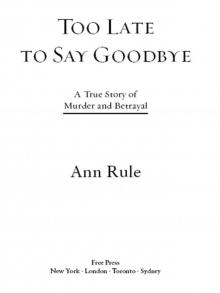 Too Late to Say Goodbye: A True Story of Murder and Betrayal
Too Late to Say Goodbye: A True Story of Murder and Betrayal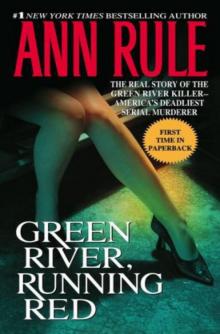 Green River, Running Red
Green River, Running Red Bitter Harvest
Bitter Harvest Dead by Sunset: Perfect Husband, Perfect Killer?
Dead by Sunset: Perfect Husband, Perfect Killer?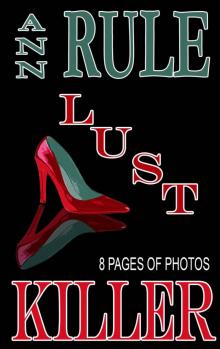 Lust Killer
Lust Killer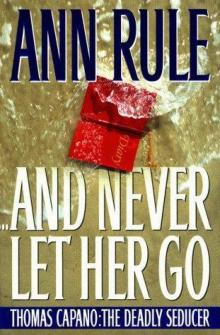 And Never Let Her Go: Thomas Capano: The Deadly Seducer
And Never Let Her Go: Thomas Capano: The Deadly Seducer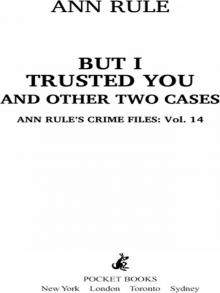 But I Trusted You and Other True Cases
But I Trusted You and Other True Cases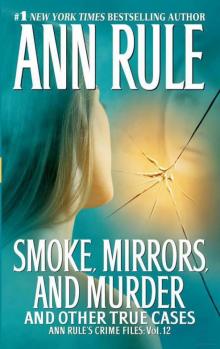 Smoke, Mirrors, and Murder and Other True Cases
Smoke, Mirrors, and Murder and Other True Cases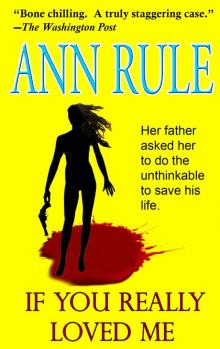 If You Really Loved Me
If You Really Loved Me Kiss Me, Kill Me and Other True Cases
Kiss Me, Kill Me and Other True Cases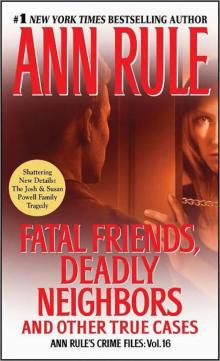 Fatal Friends, Deadly Neighbors and Other True Cases
Fatal Friends, Deadly Neighbors and Other True Cases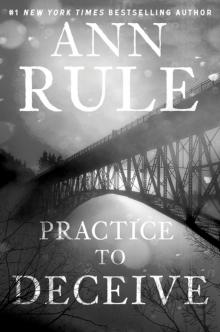 Practice to Deceive
Practice to Deceive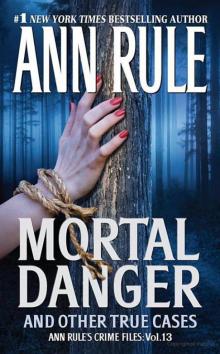 Mortal Danger and Other True Cases
Mortal Danger and Other True Cases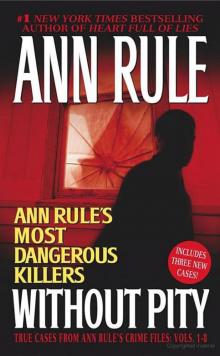 Without Pity: Ann Rule's Most Dangerous Killers
Without Pity: Ann Rule's Most Dangerous Killers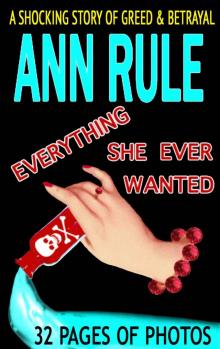 Everything She Ever Wanted
Everything She Ever Wanted A Fever in the Heart and Other True Cases
A Fever in the Heart and Other True Cases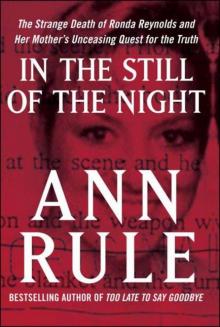 In the Still of the Night
In the Still of the Night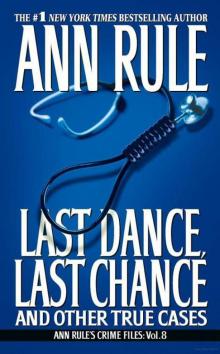 LAST DANCE, LAST CHANCE - and Other True Cases
LAST DANCE, LAST CHANCE - and Other True Cases A Rage to Kill
A Rage to Kill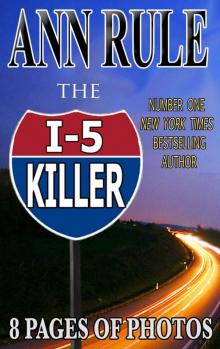 The I-5 Killer
The I-5 Killer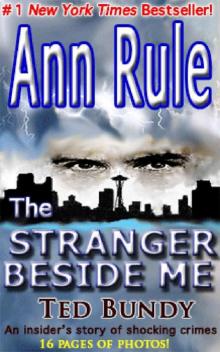 The Stranger Beside Me
The Stranger Beside Me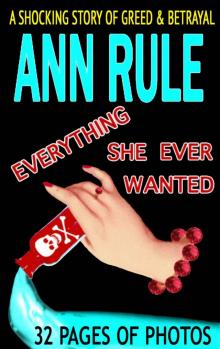 Everything She Ever Wanted: A True Story of Obsessive Love, Murder, and Betrayal
Everything She Ever Wanted: A True Story of Obsessive Love, Murder, and Betrayal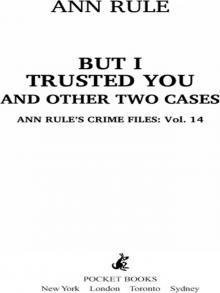 But I Trusted You
But I Trusted You Without Pity
Without Pity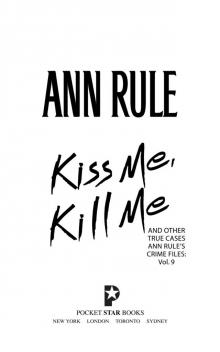 Kiss Me, Kill Me
Kiss Me, Kill Me Too Late to Say Goodbye
Too Late to Say Goodbye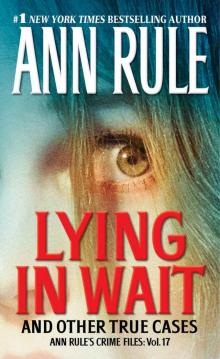 Lying in Wait
Lying in Wait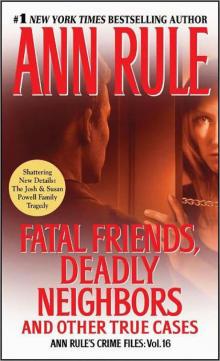 Fatal Friends, Deadly Neighbors
Fatal Friends, Deadly Neighbors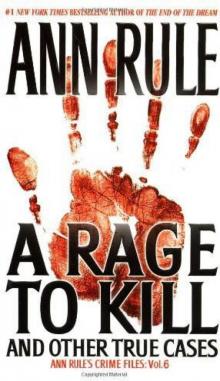 A Rage to Kill: And Other True Cases
A Rage to Kill: And Other True Cases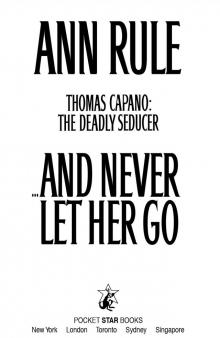 And Never Let Her Go
And Never Let Her Go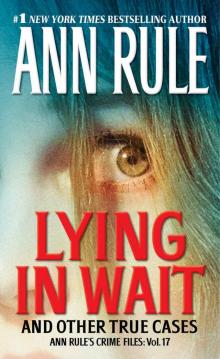 Lying in Wait Ann Rule's Crime Files Vol.17
Lying in Wait Ann Rule's Crime Files Vol.17 Blood Secrets: Chronicles of a Crime Scene Reconstructionist
Blood Secrets: Chronicles of a Crime Scene Reconstructionist No Regrets
No Regrets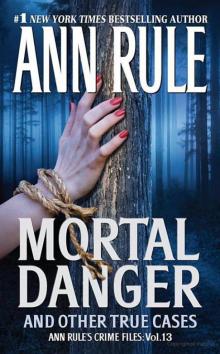 Mortal Danger
Mortal Danger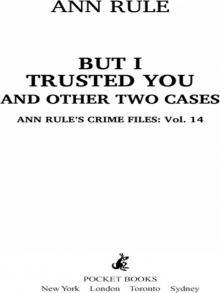 But I Trusted You: Ann Rule's Crime Files #14
But I Trusted You: Ann Rule's Crime Files #14 Empty Promises
Empty Promises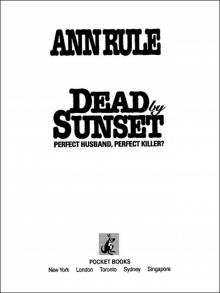 Dead by Sunset
Dead by Sunset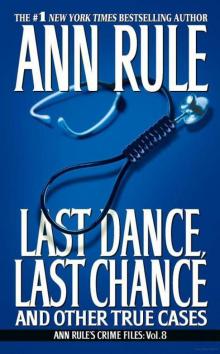 Last Dance, Last Chance
Last Dance, Last Chance Don't Look Behind You
Don't Look Behind You